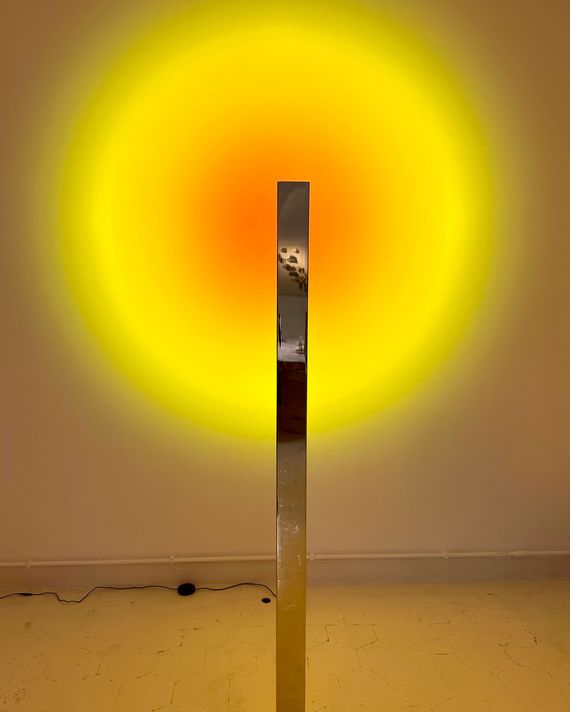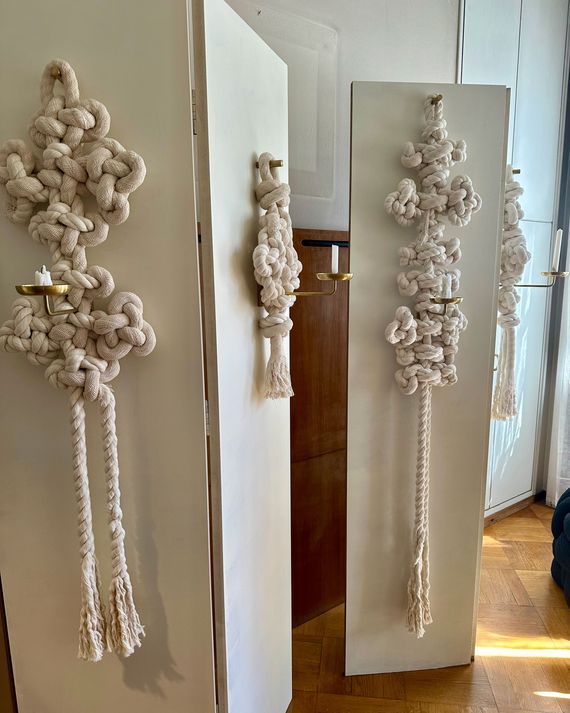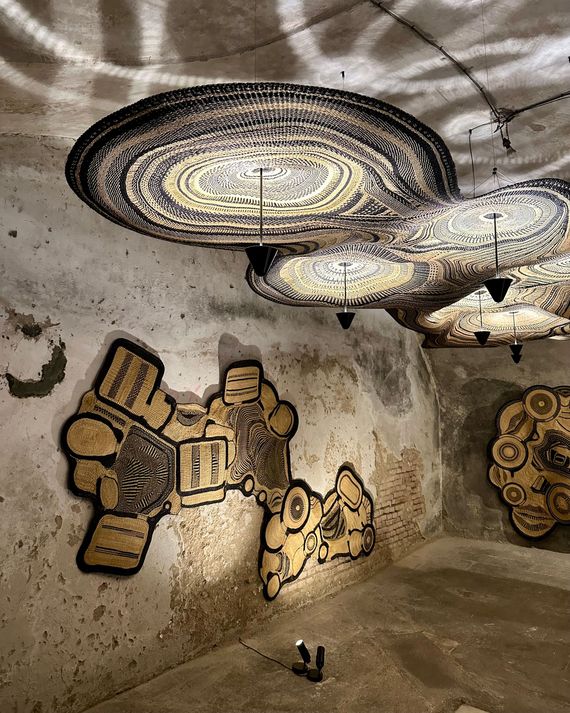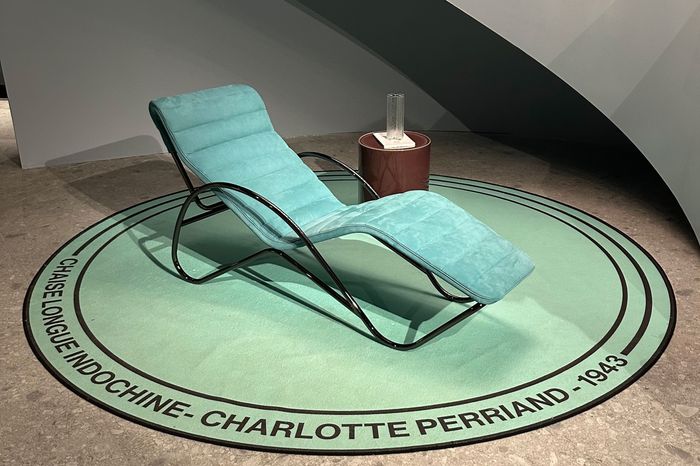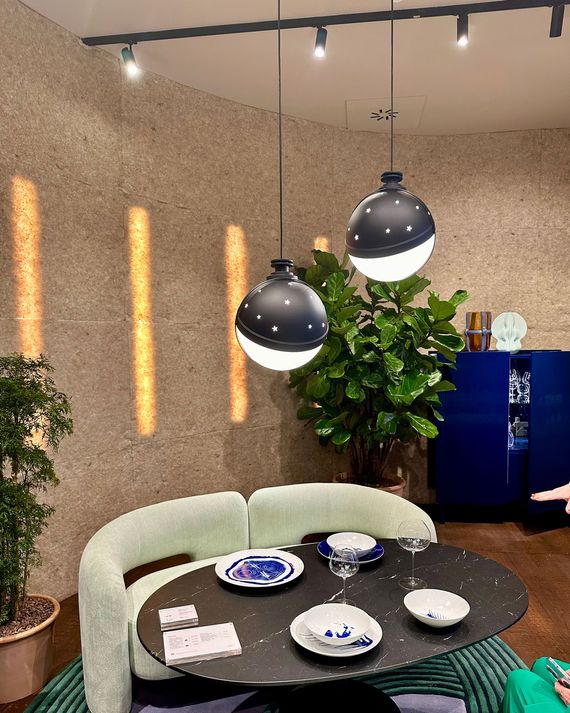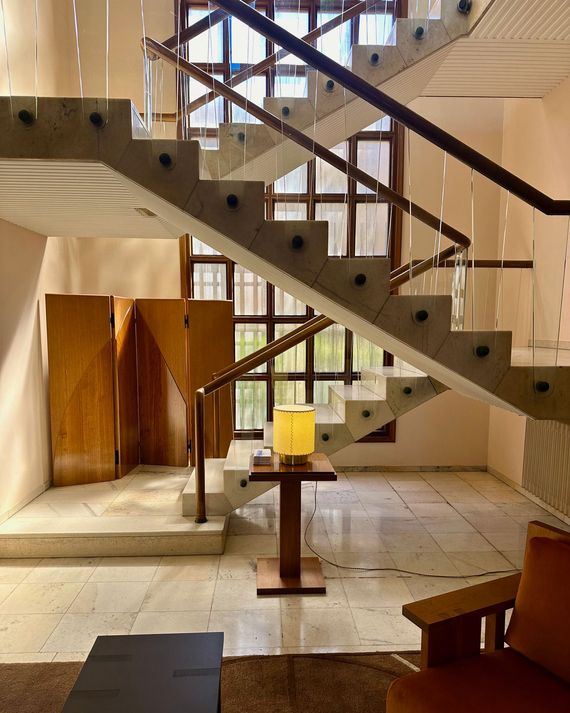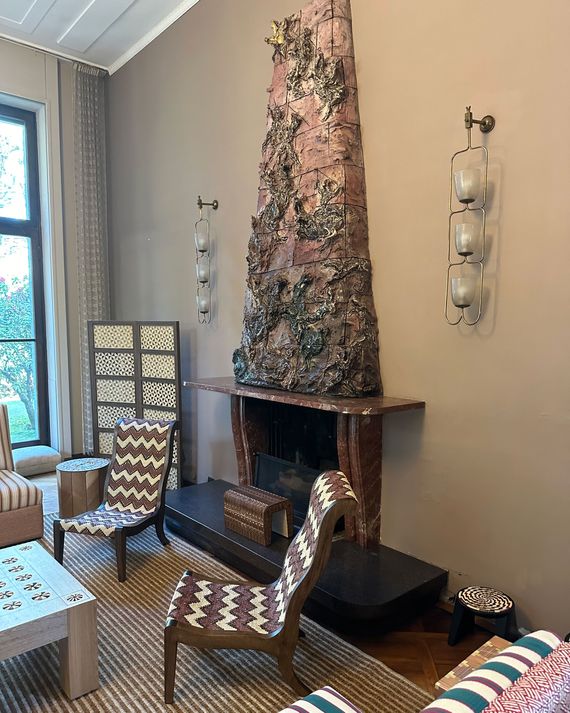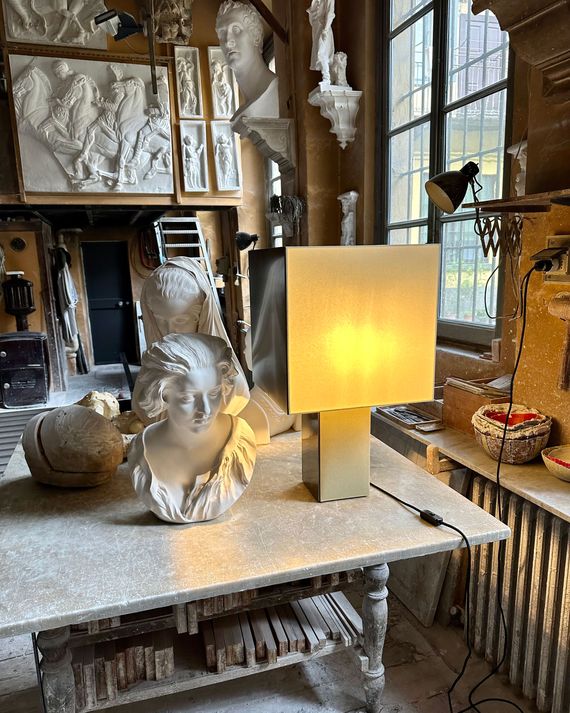Once again, Milan’s Furniture Fair turned the city into a living theater of design events. It was the 62nd edition of the massive international fair that takes over the Rho Fiera fairgrounds, a complex filled with Javits-size halls hosting major companies from across the globe, alongside the Salone Satellite pavilion, the brainchild of the legendary Marva Griffin, who for the past 25 years has curated an exhibition of emerging talent.
Some colorful standouts
Halo Editions introduced a new collection of intensely theatrical LED lighting in polished brass, and the colors radiating out from the minimalist forms were breathtaking.
At Rossana Orlandi, Li Edelkoort, the Dutch trend forecaster, collaborated with the Argentinian rug company El Espartano on “garden,” a collection that felt as naïve, joyous, and free-spirited as children’s paintings.
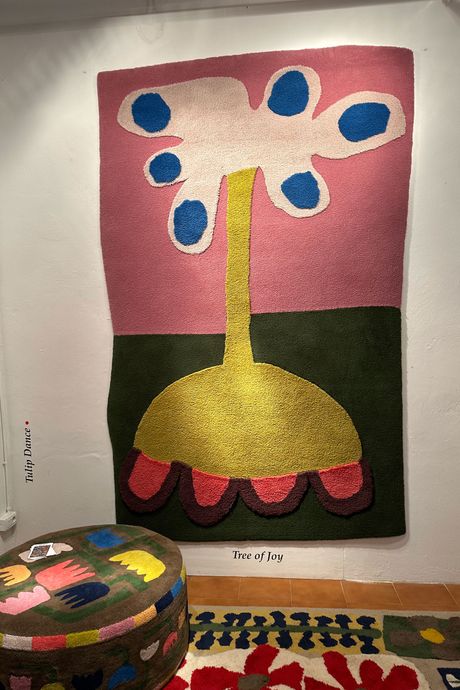
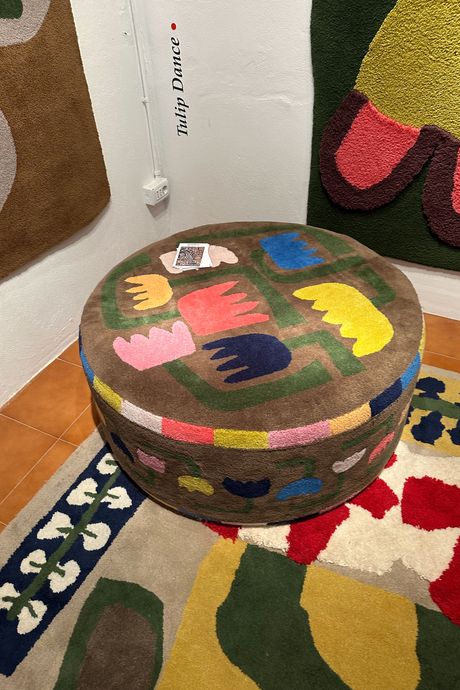
Soft seating’s reign continues
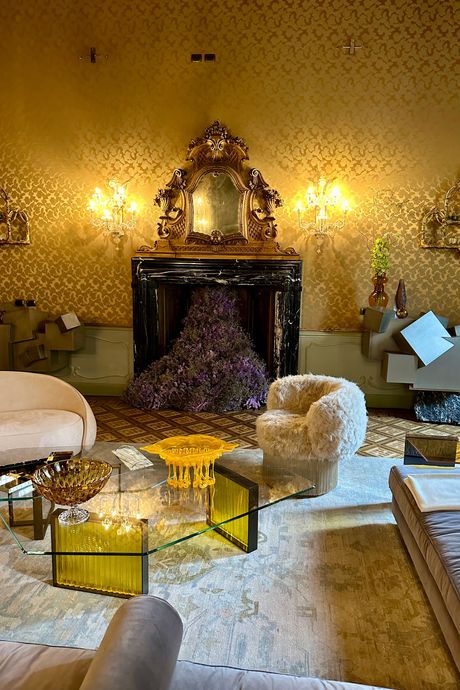
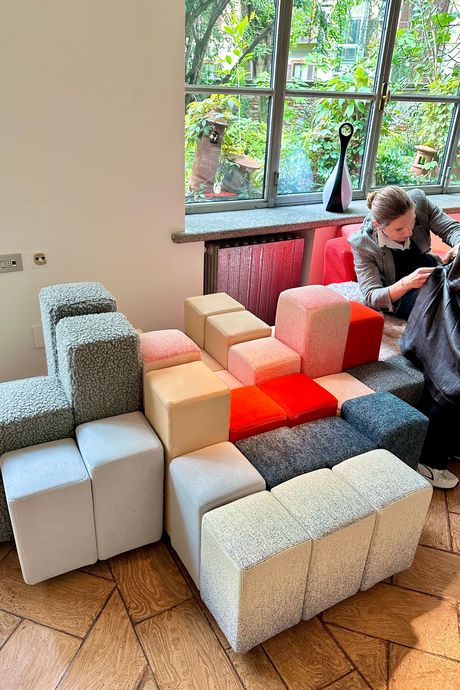
The hankering for soft furniture was evident everywhere, as we could see in Fendi Casa’s Peekasit sofa and the deliciously inviting cashmere-covered chair in the beautiful Rottet Studio installation for Artemest in Residenza Vignale. Also at Rossana Orlandi, Ron Arad, a designer known for his futuristic, swooping forms, showed a collection of understated soft sofas and soft cubes as seating. In the vast hall of Nina Yashar’s Nilufar Depot, digital artist Andres Reisinger installed a collection of 12 nubby, sculptural chairs in front of his giant apple mosaic.
Modern craft and recycled materials
There was a strong showing of local craftsmanship reworked for the modern world. The duo at WKND LAB, a design firm from Seoul, applied the ancient art of knot-tying and cloisonné to wall sconces, floor seating, and hanging art. Pet Lamp’s beautiful installation at Alcova featured gorgeous recycled plastic lamps and tapestries made by artisans in Ghana, one of the many examples of the design world’s shift toward more ecofriendly processes. In this vein, Max Lamb presented lamps made from scrap aluminum, working with Hydro, a Norwegian aluminum and renewable-energy company. His Prøve Light, a sleek table lamp of extruded aluminum, was part of a larger exhibit of seven designers working with the material. Taking on another normally toxic process, the chemical company Smit & Zoon from the Netherlands showed the potential of a mineral-based leather-tanning process it created three years ago, called zeology, that makes leather compostable and is free of chrome and heavy metals.
Archival inspiration
Studios mined their history and the archives of legendary designers to launch new products and reissue some classics: Hermès showed a new collection of leather goods and cashmere for the home inspired by everything from silk Jockey shirts to leather bucket bags. At its Milan store and at Palazzo Broggi, Cassina showed new versions of iconic favorites and some surprises, including an early Charles Eames light that has never been seen before that Eames had designed for a church in Arkansas (it helped him get into college). It’s just one piece in Cassina’s new lighting collaboration with the Eames Office.
Cassina also displayed a turquoise Indochine chaise lounge by Charlotte Perriand. While the LC4 chaise, her collaboration with Pierre Jeanerret and Le Corbusier, often gets more attention, the Indochine chaise, made of three interlocking shapes, was designed by Perriand at the end of her pregnancy when she was mostly confined to bed, as the design with armrests allowed her to keep working. It was originally produced in rattan, but Cassina has remade it in tubular steel.
At the Gervasoni flagship, Paola Navone’s Ghost Collection was completely transformed by a wild spectrum of upholstery patterns, which included sofas in the Afro Beats pattern drawn from Maasai Tartan fabrics and plastic-covered armchairs in a vibrant pink hue created by Elsa Schiaparelli. Ghost was set up by Pavone’s Otto Studio and Beatrice Rossetti Studio, where I couldn’t resist the splash of Marimekko raincoats.
The always surprising Alcova
Alcova, an offsite platform for independent designers, companies, and institutions, always finds extraordinary spaces to stage its exhibits; they’ve included the grounds of a former slaughterhouse and a military hospital. This year, its seventh edition, the fair moved from a postindustrial setting to more historic ones: the modernist Villa Borsani and Villa Bagatti Valsecchi, a preserved 19th-century villa. Villa Borsani, built in 1945 by architect Osvaldo Borsani for his family, has a spectacular collection of modernist treasures, including a Lucio Fontana fireplace in the living room, which was the setting for Magnetic Midnight Maison, a collection of furniture made by Colombian artisans skilled in hat-making and hammock weaving.
Entering the magnificent but run-down Bagatti Valsecchi, I was shocked to see what looked like sand covering the floor of the living room. In fact, Harry Thaler had covered it in wood shavings for a collection of 3-D-printed furniture in collaboration with EconitWood. The bulbous chairs and table, which look like stone, are in fact a new material composed of wood scraps. The villa’s ice house, which was built into a stone grotto on the grounds of the property, was the setting for an installation of ethereal collection of furniture composed of thin lines and made of leather, rattan, wood, glass, and steel by Japanese architect Junya Ishigami for Maniera Gallery.
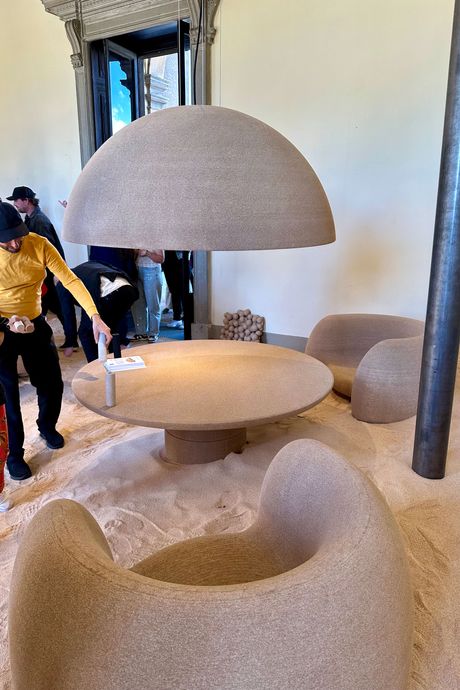
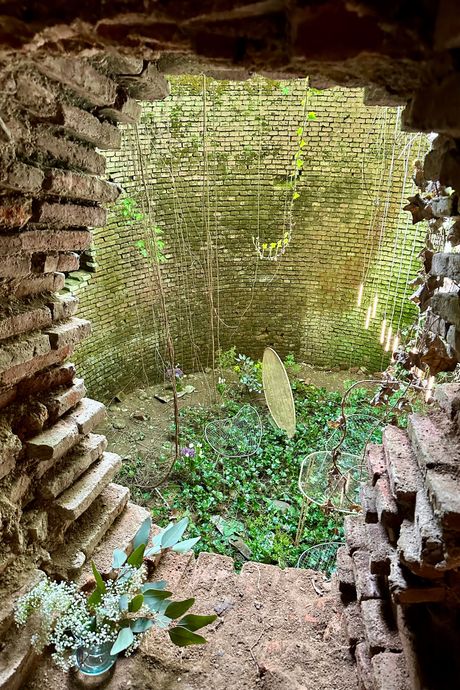
Beyond the villas, the founders of Milanese design studio Dimore, Emiliano Salci and Britt Moran, displayed a new collection of furniture under their new brand, Interni Venosta, at a working plaster atelier. The brand’s pieces pay homage to 1970’s Milanese interiors and are also inspired by the Bauhaus, Donald Judd, Carl Andre, Walter de Maria, Marcel Breuer, and Gerrit Rietveld. The gleaming walnut, glass, and steel collection, which includes a table lamp in brushed steel and paper, stood out against the backdrop of the plaster busts and wall panels. Overall, the effect was like going back in time to another century.
